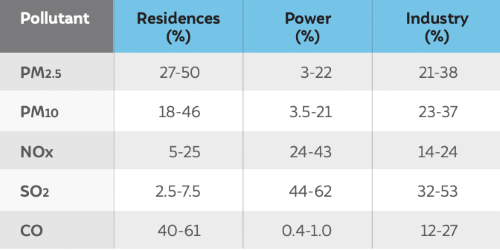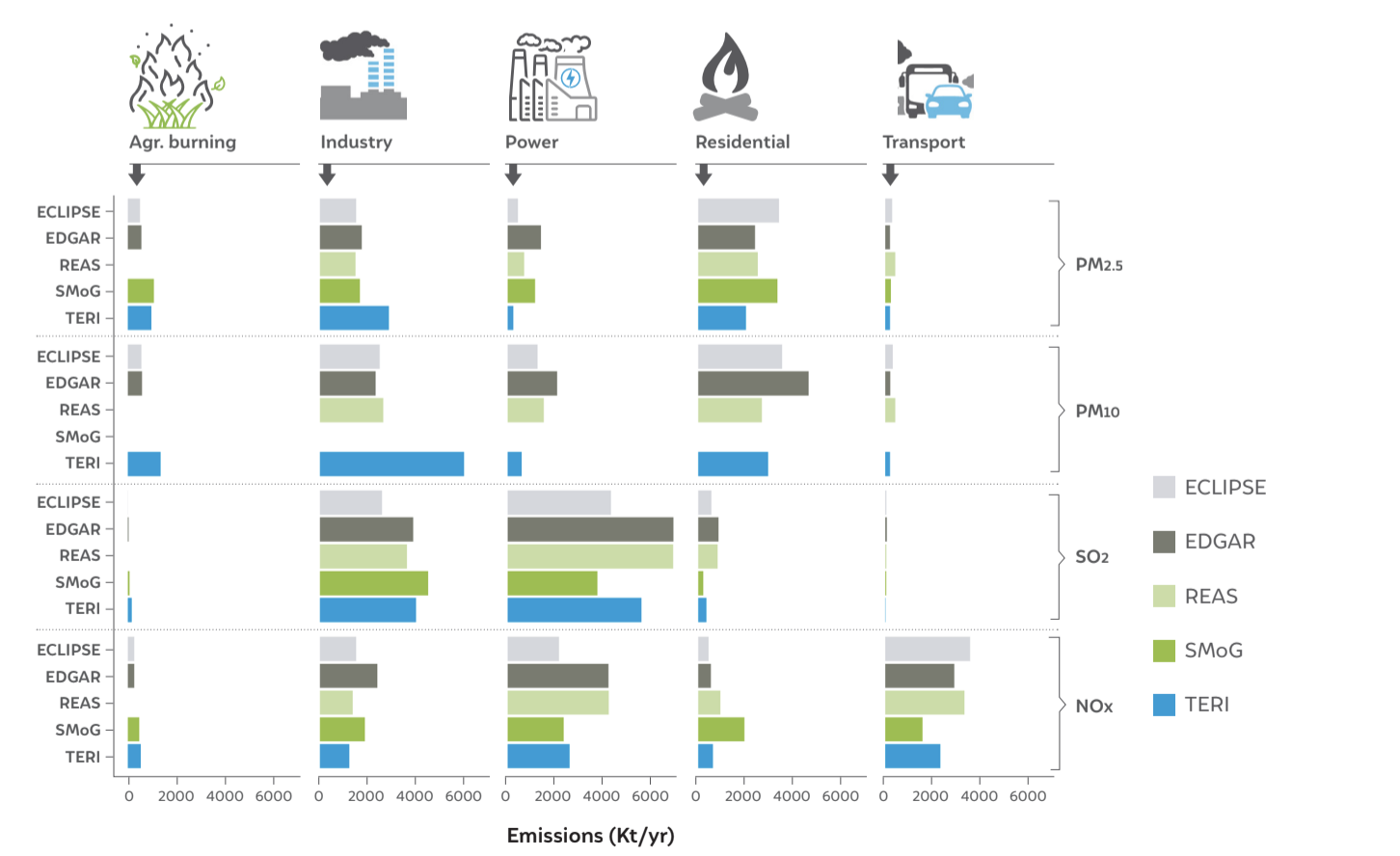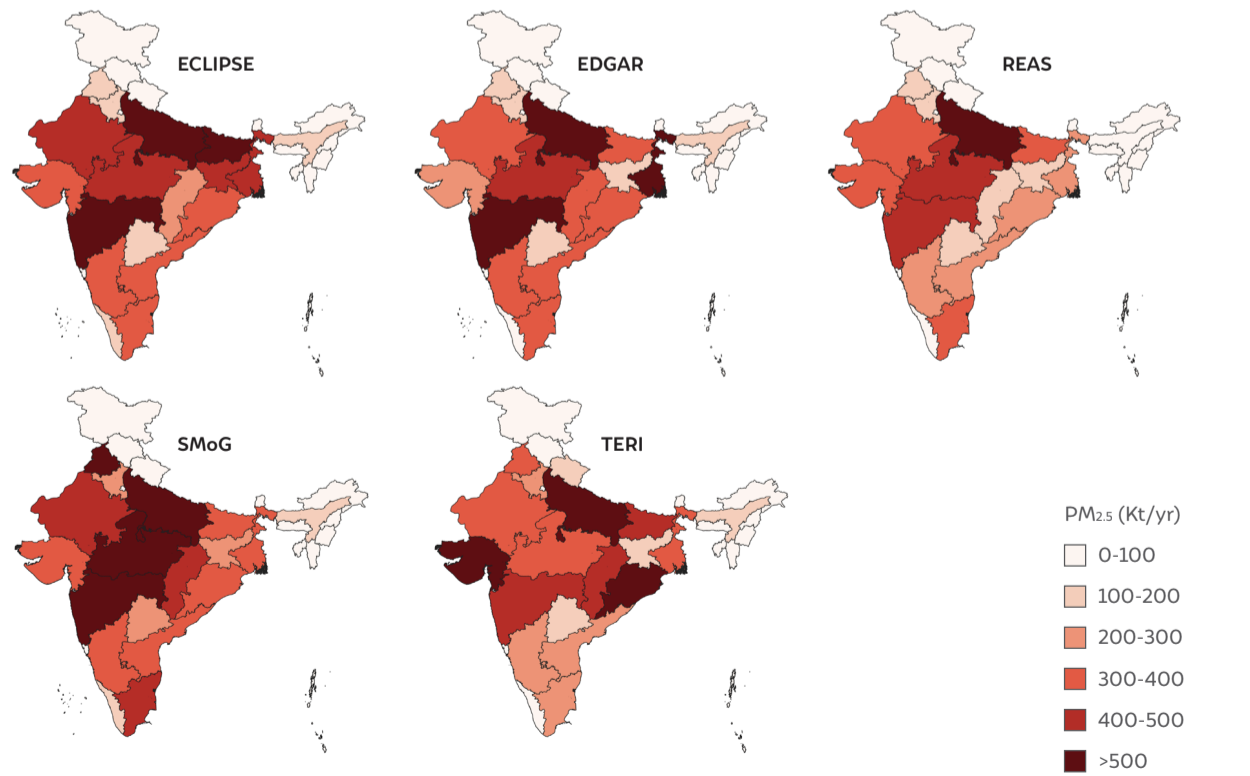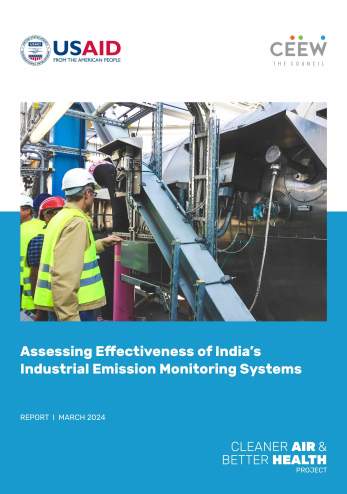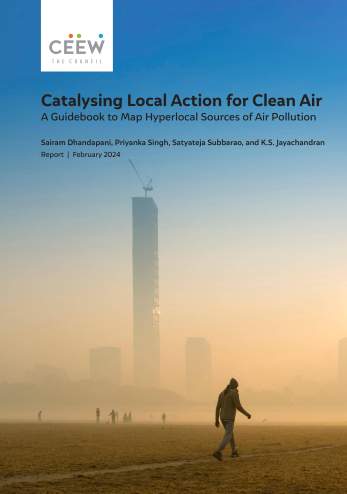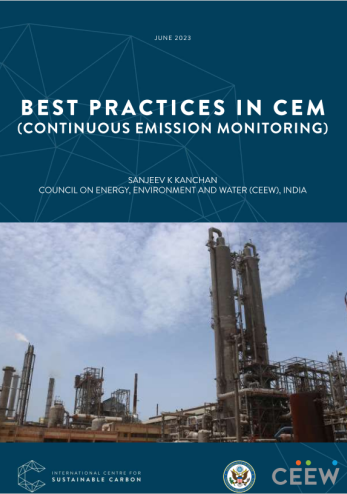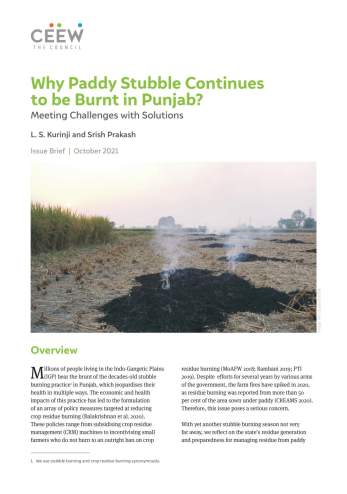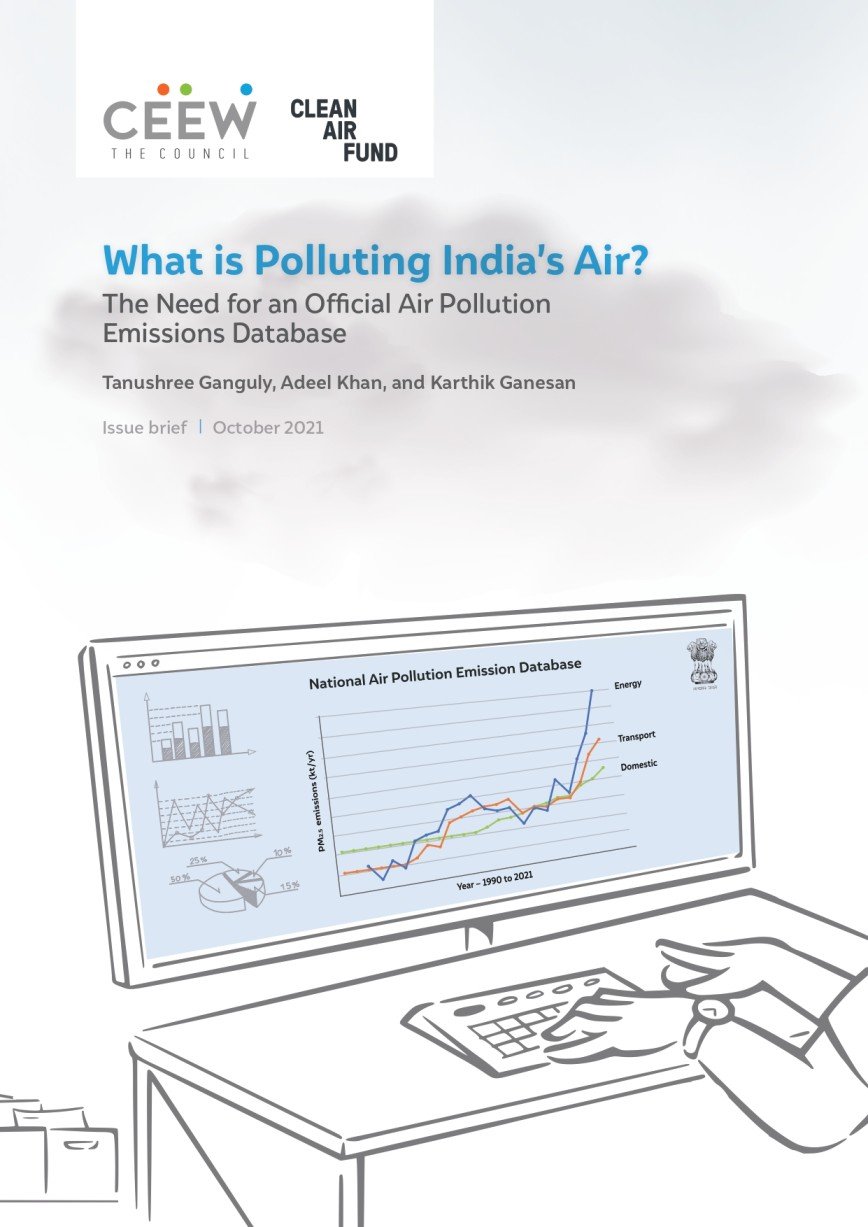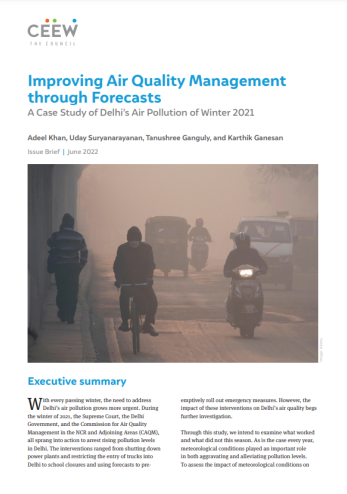Issue Brief
What is Polluting India’s Air?
The Need for an Official Air Pollution Emissions Database
Tanushree Ganguly, Adeel Khan and Karthik Ganesan
October 2021 | Clean Air
Suggested citation: Ganguly, Tanushree, Adeel Khan and Karthik Ganesan. 2021. What is Polluting India’s Air? The Need for an Official Air Pollution Emissions Database. New Delhi: Council on Energy, Environment and Water.
Overview
This study reviews and compares five databases (three global and two regional) that provide emission estimates for air pollutants in India. These databases include EDGARv5, ECLIPSEv6b, REASv3.2, SMoGv1 and TERI (2016). While these global and regional estimates agree on the leading sources of air pollution in India, they vary significantly from each other. The study illustrates the extent of these variations and the uncertainty it creates in assessing the severity of impact of different polluting sectors on India’s air quality levels. It also highlights the need for a periodically updated air pollution emission database for India that can capture the dynamic nature of air pollution in the country.
A comprehensive national emission database would be critical to determine sectoral emission reductions needed to meet the National Clean Air Programme (NCAP) goals, which set a target of 20 to 30 per cent reduction in particulate concentrations by 2024. An emissions inventory is also necessary to evaluate the impact of policy and technological interventions on India’s emission load. While India has made significant progress in preparing clean air plans for over 100 non-attainment cities, expanding real-time monitoring infrastructure in cities and institutionalising the National Knowledge Network (NKN) in the first two years of the NCAP, it is yet to formalise its National Emission Inventory for air pollutants.
Key Findings
- The NCAP acknowledges the need for a national emission inventory for “tracking progress towards emission reduction targets and as inputs to air quality models.”
- The NCAP had set the timeline for creation of a National Emission Inventory as 2020. But, India is yet to formalise one.
- The five inventories analysed in this study vary significantly in both sectoral estimates and sectoral contributions. While these variations do not affect our ability to execute action, it increases the uncertainty in assessing the impact of these interventions.
- For instance, household emissions, which is seen to be the leading contributor of PM2.5 across the five inventories, ranges from 27 to 50 per cent of India’s total PM2.5 emissions.
Sectoral contributions to emissions vary significantly
Source: Source: Authors’ analysis; Data from EDGAR, ECLIPSE, REAS, SMoG and TERI
- Power plants and industries appear to be among the leading emitters for multiple pollutants, including SO2 and NOx. SO2 and NOx react in the atmosphere to form secondary particulate matter, thereby increasing ambient particulate concentration.
Highest variations in estimated emissions from power plants, transport and agricultural residue burning
Source: CEEW Analysis, 2021; Data sourced from ECLIPSE, EDGAR, REAS, SMoG and TERI (2016)
- All five databases find Uttar Pradesh (UP) and Maharashtra to have the highest PM2.5 emission burden. Both the states are also home to the highest-number of non-attainment cities in the country.
- With Uttar Pradesh being the most populous state in India, the high emissions can be ascribed to a significant share of PM2.5 emissions from solid fuel use in households.
Uttar Pradesh, Madhya Pradesh and Maharashtra emerge as the leading emitters of PM2.5
Source: Authors’ analysis; Data from EDGAR, ECLIPSE, REAS, SMoG and TERI
- The variations in both sectoral estimates and sectoral contributions are because different databases rely on varying sources for activity-level information and emission factors.
- While global emission databases like EDGAR, ECLIPSE and REAS rely on international datasets like IEA energy balances, UNSTATS, FAOSTAT, etc, the Indian emission databases like TERI and SMoG use regional-level activity information to arrive at national-level emissions.
- There are inconsistencies in the choice of emission factors too. While TERI and REAS primarily use fuel-based emission factors, EDGAR, ECLIPSE and SMoG use technology-linked emission factors. The coverage of technologies and their impact on choice of emission factors also varies significantly.
Key Recommendations
- Formalise an official air pollution database in India. Such an emissions inventory is key to help model the dynamic nature of pollution sources and their impact on various areas and assess the implications of new policies and regulations to curtail emissions from specific sources.
- Assess the representativeness of existing estimates, given the wide variation in emission estimates for the same geography. The NKN can play a critical role in identifying ways in which these inventories could be improved/upgraded to reflect India’s emission scenario.
- Conduct periodic primary surveys to collect data from residential and informal sectors. Household energy use in India continues to be a significant source of PM2.5, but the latest available information on household primary cooking fuel usage is from 2011. A periodic and sustained assessment of use across different sectors, especially those not covered in formal statistical surveys, is critical to establish their contribution to local and regional pollution.
- Formulate protocols for data reporting and collection. The availability of information required for computing emissions varies from sector to sector and region to region. To address data gaps and ensure consistency in availability of data, government departments should formulate protocols for reporting about polluting entities that fall under their jurisdiction
- Develop and publish a comprehensive emission factor database, consisting of region-specific, process-specific, and fuel-specific emission factors.
A comprehensive national emission database would be critical to determine sectoral emission reductions needed to meet the National Clean Air Programme (NCAP) goals, which set a target of 20 to 30 per cent reduction in particulate concentrations by 2024.




